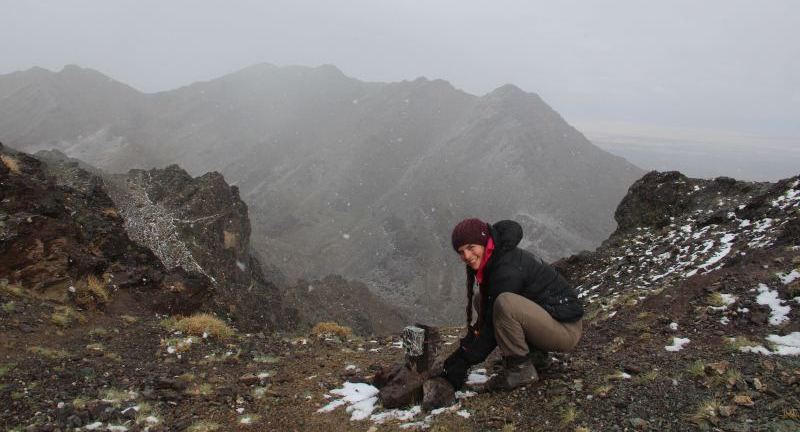Beicology: The Plight of China's Snow Leopards
The once mighty snow leopard is now marginalized. Conservationist Justine Shanti Alexander has spent hours at towering altitudes in icy cold weather to learn more about these heralded creatures and their plight. Her research details how retaliatory killings, livestock rearing, contribution to loss of prey, and the increasing penetration of development projects into snow leopard areas have all been contributing factors to the snow leopards’ decline in China and across Asia. She tells us more below.
Tell us a little bit about yourself and how you got involved in wildlife and ecology.
I am fascinated by mountains and have been on a number of high-altitude (4,000-6,000m) expeditions, for work as well as personal adventure. In the last six years, I have had the extraordinary opportunity to be associated with international and national efforts across Asia’s high altitude belt to protect one of the world’s most remote and elusive carnivores – the snow leopard. I was first based at Beijing Forestry University studying the ecology of snow leopards as part of my PhD. More recently, I have had the opportunity to work as a member of the international science and conservation team at the Snow Leopard Trust – a science-based NGO that is building networks of scientists and conservation practitioners across the larger region.
When did you first begin to learn about the snow leopard's plight?
I didn't know much about snow leopards until I first came to China in 2011 to start my PhD. As part of my PhD research, I led a small team to estimate and assess the threats to snow leopards across the northern area of Qilian Shan Nature Reserve (approximately 4,000 square kilometers). This involved spending four months over two winter field seasons in remote and difficult conditions – at an average altitude of 3,000m and in temperatures reaching -30 degrees Celsius. These field months were when I really got to know the snow leopard.
What characteristics/traits of the snow leopard do you admire most, and how does that motivate you to help save them?
Snow leopards are the most elusive of the big cats and are sometimes referred to as the Ghost of the Mountains. They are known for their solitary nature and have vast home ranges that can cover hundreds of kilometers. Unlike other big cats, snow leopards do not have the anatomical ability to roar, but can growl, hiss and make chuffing sounds. We must therefore roar for their cause.
Why is China important for snow leopards?
China is estimated to hold up to half of the world population of snow leopards and it also borders 11 of the snow leopard range countries. By dint of its scale, it plays a central role in snow leopard conservation. As in other countries, research and conservation of snow leopards remain modest and we still lack a clear understanding of their distribution, numbers, and threats. There are however great opportunities for China to make a difference, given the creation of large reserves, current political commitment at the central and provincial levels to take action to safeguard the mountain habitat and its fauna and flora, and public interest in the snow leopard.
There are many challenges ahead but I am hopeful they can be surmounted! Strong scientific capacity is emerging and I expect we will learn a lot more about the snow leopard in the coming five to 10 years.
More stories by this author here.
Email: kylemullin@truerun.com
Twitter: @MulKyle
Instagram: mullin.kyle
Photo courtesy of Justine Shanti Alexander







